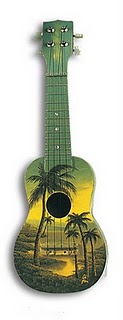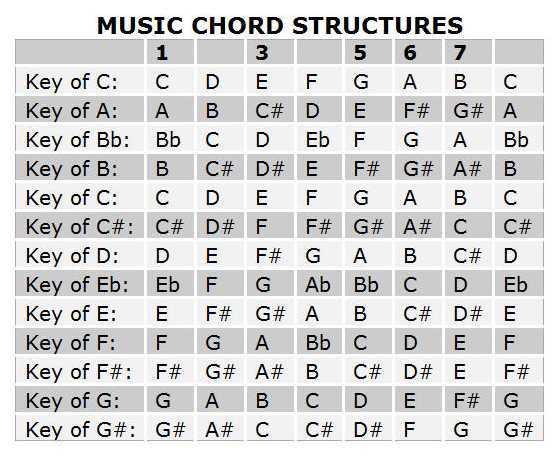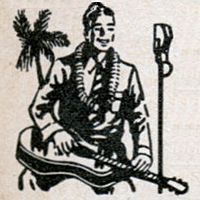 Jerry Byrd (1920-2005) was a brilliant steel guitar artist who set the
standard for generations to come. Jerry invented the C6th tuning (Jerry
says it was at least 1938 on page 119 of his autobiography). He also
invented the C Diatonic tuning later on in 1952, which few steel guitar
enthusiasts are familiar with. Jerry didn't fully develop the tuning until
much later on, but he sure made some awesome recordings with it in the
1950's and 1960's. To show you what can be done with the Diatonic tuning,
check out this 1955 recording by Jerry Byrd titled, “Come
A Little Closer” (from his Hi-Fi Guitar album).
Jerry Byrd (1920-2005) was a brilliant steel guitar artist who set the
standard for generations to come. Jerry invented the C6th tuning (Jerry
says it was at least 1938 on page 119 of his autobiography). He also
invented the C Diatonic tuning later on in 1952, which few steel guitar
enthusiasts are familiar with. Jerry didn't fully develop the tuning until
much later on, but he sure made some awesome recordings with it in the
1950's and 1960's. To show you what can be done with the Diatonic tuning,
check out this 1955 recording by Jerry Byrd titled, “Come
A Little Closer” (from his Hi-Fi Guitar album).
Also, listen to Jerry recording with this tuning on, “Next To Jimmy,” by Ferlin Husky. Wow! Great stuff! Here's some tablature I wrote for the steel guitar solo in “Next To Jimmy.” I tabbed out “Adventures In Paradise” as recorded by Jerry in 1961 using the C Diatonic tuning, which is amazing, simple and beautiful! I recommend playing along with Jerry's original recording, because it's great! Most steel guitarists who take a look at the Diatonic tuning are immediately intimidated by it. The Diatonic tuning is extremely simple to remember, just follow the alphabet for the bottom seven strings (from bass to treble: D, E, F, G, A, B, C, E). This is the tuning that Jerry uses for “Come A Little Closer.” I know because I play it on my 8 string Jerry Byrd Frypan. So I've confirmed it. I've found other listings online of Jerry's Diatonic tuning that leave out the 3rd string B, but you must have it for “Come A Little Closer.” Here is “Honolulu Eyes” as recorded in 1959 by Jerry Byrd using his C Diatonic tuning. Good stuff! Here's the intro and first part of the song “Come A Little Closer” that I tabbed out from the recording above. Here's an MP3 Band-In-A-Box (BIAB) rhythm track that I made (and here's the original .SGU file if you'd like to open it in BIAB and work with it. I used BIAB version 2010.5, so you shouldn't have any problems opening the file if you have the same or a newer version). I set the BIAB tempo higher, because it didn't sound right being slower. The BIAB track pales in comparison to the beautiful original background that Jerry used, but it's good enough to learn the song. This will get you started (if you have an 8-string steel guitar, tune the 8th string to D, which is the natural progression of the Diatonic tuning)...
And here's the first part of the chorus to get your started. The chorus starts at 1:40 in time in the MP3...
Isn't that beautiful? I purchased some nice solo tablature arrangements by Jerry Byrd in his C Diatonic tuning, from Scotty's Music in St. Louis, including the above complete song “Come A Little Closer” (in the exact tuning shown above). I tabbed my arrangement slightly different than Jerry did, as I carefully listened to the original recording, particularly the chorus. According to my order list, Scotty's also has Estrellita, Danny Boy, Cold Cold Heart, Ebb Tide, Ame No Bojyo, Hana lei Moon, Honolulu Eyes, Serenade To Nalani, Mauna Kea and Invitation To Love, tabbed out in the C Diatonic tuning by Jerry. A helpful way to look at Jerry's Diatonic tuning is that it is a C6th tuning with an added 9th (D note) and 11th (F note). So you've really got a C11th tuning here. Really sweet too!
Let's use the chart above to see what chords we've got in the C Diatonic tuning. I won't tab out all the chords, because you can use the C6th chord tabs here. You got the C6th tuning below with the added 3rd and 6th string. So if you pretend that strings 3 and 6 aren't there, it the same as standard C6th. This is a really versatile tuning, if not the most...
The nice thing about standard C6th is that you can relax and just rake across all the strings; whereas with the C Diatonic you've got to work at it more (like the Bill Leavitt tuning), but you've got more to work with on the C Diatonic. It's a very beautiful and interesting tuning to say the least! Although this is not a strum tuning like the F# minor 9th tuning, it does offer a very beautiful 9th chord as heard in the previous song “Come A Little Closer.” I tried to work out the solo for “Next To Jimmy” and it requires some excellent left hand maneuvering for much of the solo, but that's why Jerry was dubbed “The Master Of Touch And Tone” in the Steel Guitar Hall of Fame. That's quite an honor, and Jerry earned it! For the solo to “Next To Jimmy” you have to do several bar slants, which aren't too difficult once you become familiar with how the tuning works. Each tuning has a different “feel” to it, which once you are comfortable with, you'll begin to excel at the tuning. I understand the C6th well, so be viewing the C Diatonic tuning without strings 3 and 6, I see why Jerry did what he did to invent this tuning. It is really an expanded hybrid C6th. I think it's great! The following helpful information is from Jerry's good friend, Ray Montee...
|




